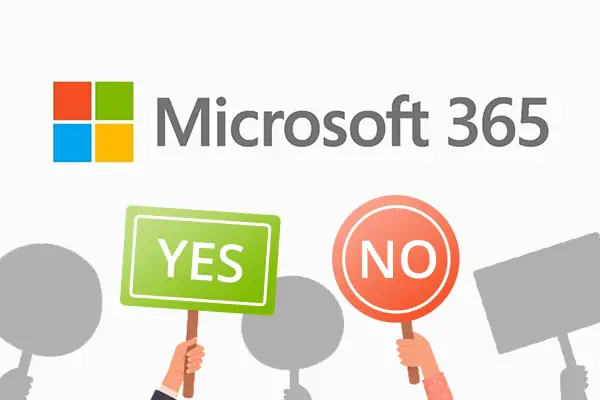Here at Content Formula we find ourselves being asked this kind of question from customers quite often. The technology choices for employee communications are now broad and mature; there are a lot of technology options and product choices. While this is a nice problem to have, it can be difficult to know how to start working out what will be the perfect fit for your needs and drive a strong digital employee experience.
There are a lot of different factors that need to be considered when you start choosing the right employee communication platform. It is likely that you will need to carry out some user research with your employees to nail down some specific requirements and then go through some kind of formal evaluation or RFP process. We are not talking about a decision that you can make in a week; investing in the right employee communications platform is important and warrants proper attention and process.
However, when you are starting out it can really help to know the kind of internal communications platform that you are after, for example whether you are looking for
. It is also important to know the kind of problems you are wanting to solve and focus on are you trying to improve the employee experience or are you more focused on efficiency?
Here are twelve things to consider when you are choosing your internal communications platform.
1. Your overall company strategy
What is your overall company strategy and objectives? Perhaps you are looking to merge two companies, to drive standardisation, to achieve digital transformation, to drive efficiencies or transform the digital employee experience. Perhaps you have to meet an ambitious recruitment drive? Perhaps you are having to readjust in the new reality of a post-pandemic world with continuing lockdowns and difficult economic conditions? Whatever your company strategy, the objectives and capabilities of your employee communication channel will need to align with these wider aims.
2. Key stakeholder strategies and objectives
Your choice of employee communication platform will also be heavily influenced by other critical strategies from key stakeholders. These include your technology strategy, your digital strategy, your internal comms strategy, your HR strategy and even your customer experience strategy. There may also be some related roadmaps which have some real bearing on your choices; the IT and HR technology roadmaps are particularly important here and may include dependencies that impact your communication technology choices.
3. Employee and user needs
A huge impact on your choice of your communication platform are the needs of your employees. It is important to have an understanding of:
- the processes that need to be improved
- the pain points that need to be removed
- the information employees rely on to complete tasks
- how employees interact with devices
- the kind of content that engages employees.
The more you have of this kind of understanding, then the better decision you will make to choose the kind of platform that will make a real difference to the employee experience.
4. The composition of your workforce
Its also important to understand the composition of your workforce and the range of different needs across regions, locations, divisions and roles. Global workforces can be both complex and diverse with multiple cultures, languages and circumstances. In particular, you may have office-based employees and those who are frontline or deskless; your solution may need to be able to deliver effective messaging to very different groups.
5. Your current digital communications set-up
What you already have in place for digital communications is also a major factor. You may have an intranet that already works and need an employee app, or the other way around. You may have an extensive network of digital signage. You may want to change one of your technologies so it integrates with the others, or you may want to look to evolve an ecosystem from scratch. Knowing what already works and what doesnt is also a valuable input into choosing the right product and related approach.
6. The technology landscape: Micrososft 365 or not Microsoft 365

The current technology landscape is also important in terms of ensuring that whatever you choose will fit into your technology stack and potentially integrate with other tools. Often the key question here is whether you are on Microsoft 365 (or SharePoint for on-premises) or not; do you want your communication platform to integrate with SharePoint, for example?
In our view if you are on Microsoft 365 it makes sense to
make sure at least your intranet is based on SharePoint Online because it offers far more possibilities to evolve a compelling digital workplace and drive excellent communications.
7. Device ownership
The hardware and devices in operation will also be a factor here. You want to ensure the right compatibility with the computers and mobile devices that your employees have, and also whether some employees may have to use their own personal mobile devices to access digital tools. This latter point is often a key decision point on choosing an employee app platform.
8. Security and risk
Depending on your sector, legal and regulatory commitments, and information security requirements, security and risk are going to be a big factor in the choice of any product. Its always worth considering these from the outset as it can dictate your technology choices, in particular relating to cloud vs on-premises.
However, there can be a surprising amount of wiggle room, as sometimes risk considerations are dependent on the information and communications you choose to include on a communication platform. There are also configurations you can usually make to navigate some of these challenges.
9. Budget and resourcing
Obviously, your budget will be a consideration here and it will be useful to have some kind of range of what is realistic. However, when thinking about money it is worth taking into account the total cost of ownership across three to give years. Look beyond the first-year licensing and installation costs however attractive these may seem. Does the solution save you any time and money? Are there any additional costs that need to be taken into account?
Youll also need to consider the resourcing required to manage it. For example, a new intranet is likely to need some kind of dedicated intranet manager.
10. Identity management and related data
If any factor gets missed in choosing a platform it is considering the state of the data that underpins your identity management set-up. You may have data dependencies which you need to make a particular employee communication platform work. In particular, relatively complete Active Directory data usually fed from a HR system is usually critical for driving effective personalization on an intranet, but not all organisations have this.
Also, whether your frontline employees have digital identities usually in the form of corporate email addresses will also dictate the kind of solution you choose; your choice of internal communication platform may need to be able to be accessed by people who arent on Active Directory at all. This tends to be an area where employee apps perform better than intranets.
11. Timetable
Your timetable can be important. There may be a pressing, urgent need to roll something out quickly, for example an upcoming merger. Some platforms are quicker to roll-out, although there are usually options to proceed quickly for most products, for example taking more of a minimum viable product (MVP) approach.
12. Detailed requirements
Ultimately you will need some kind of more detailed requirements to make any final decision on technology. You want to ensure the platform you invest in has all the specific capabilities you need. Carrying out a
detailed user research and discovery phase to get those requirements is critical.
Your choice of communication platform is important in driving the best digital employee experience possible. But it is not always straightforward there are multiple factors to take into account. We hope this article is a useful starting point. If you would like to discuss which internal communications platform is right for you,
 The current technology landscape is also important in terms of ensuring that whatever you choose will fit into your technology stack and potentially integrate with other tools. Often the key question here is whether you are on Microsoft 365 (or SharePoint for on-premises) or not; do you want your communication platform to integrate with SharePoint, for example?
In our view if you are on Microsoft 365 it makes sense to make sure at least your intranet is based on SharePoint Online because it offers far more possibilities to evolve a compelling digital workplace and drive excellent communications.
The current technology landscape is also important in terms of ensuring that whatever you choose will fit into your technology stack and potentially integrate with other tools. Often the key question here is whether you are on Microsoft 365 (or SharePoint for on-premises) or not; do you want your communication platform to integrate with SharePoint, for example?
In our view if you are on Microsoft 365 it makes sense to make sure at least your intranet is based on SharePoint Online because it offers far more possibilities to evolve a compelling digital workplace and drive excellent communications.


